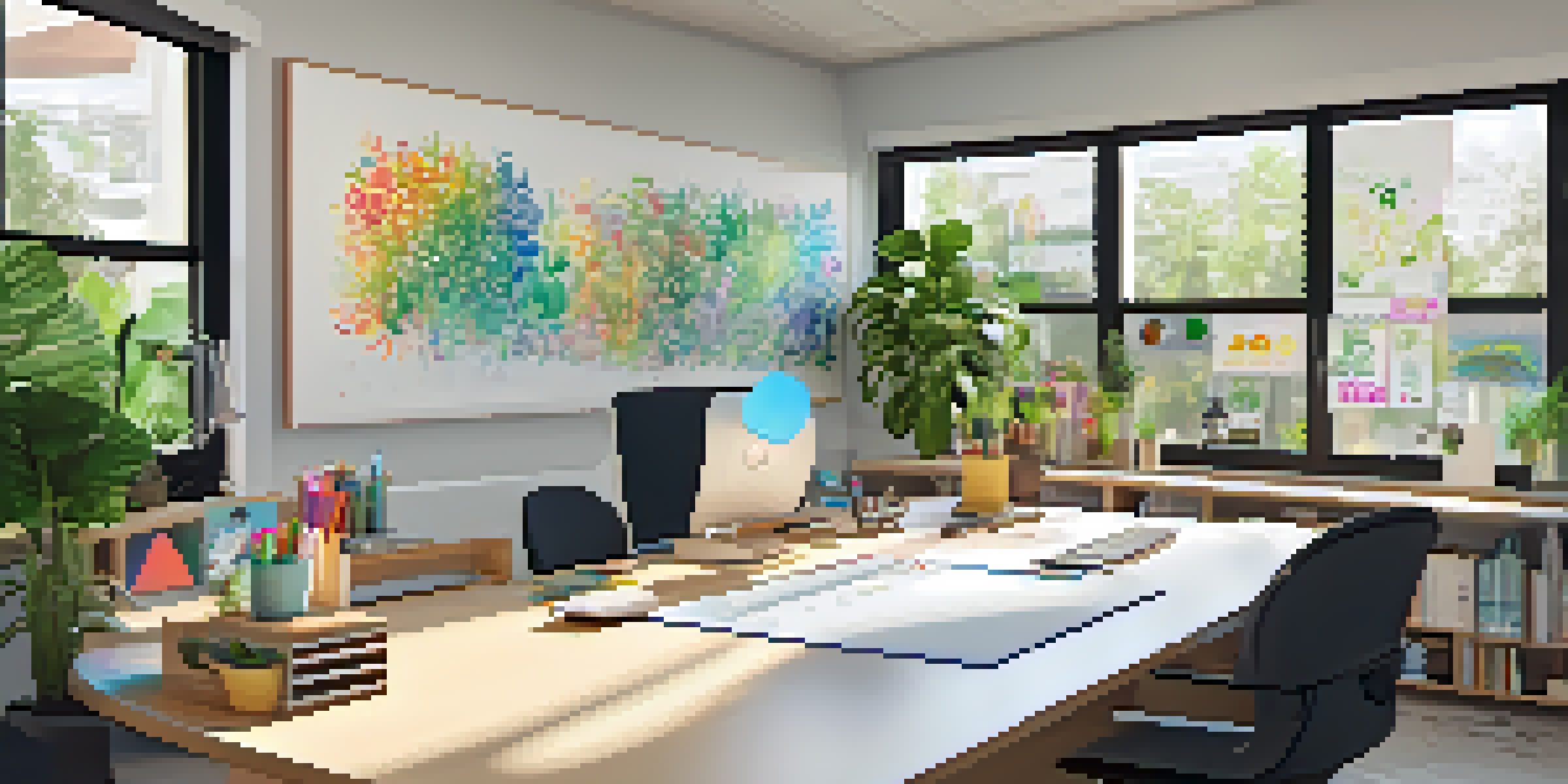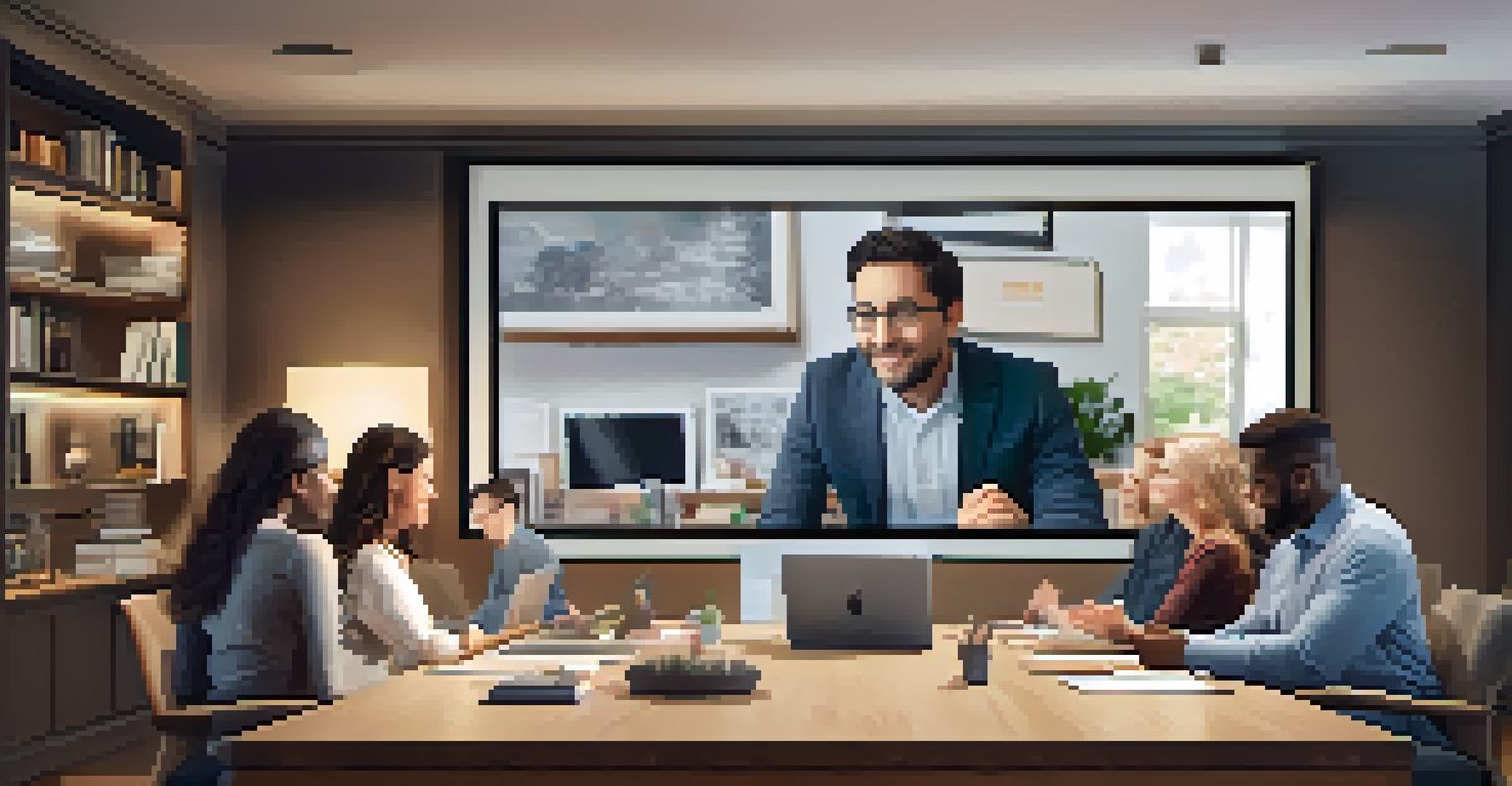Creating a Home Office That Fosters Collaboration

Understanding the Importance of Collaboration at Home
In a world where remote work is increasingly common, collaboration is key to success. A home office that encourages teamwork can enhance productivity and creativity. By fostering connections, employees can share ideas more freely and solve problems together, just like in a traditional office setting.
Alone we can do so little; together we can do so much.
Consider how in-person meetings often spark innovation; the same principle applies to virtual interactions. A well-designed space can facilitate these discussions and make everyone feel more engaged, even from a distance. Think of your home office as a creative hub where collaboration flows naturally.
With the right setup, your home office can mirror the collaborative energy of a bustling workspace. It’s about creating an environment that inspires communication and synergy, ultimately leading to better outcomes for projects and tasks.
Choosing the Right Space for Collaboration
The first step in creating a collaborative home office is selecting the right space. Ideally, look for an area that is quiet yet easily accessible for virtual meetings. This might be a spare room, a section of your living room, or even a well-organized corner of your bedroom.

Make sure the space is free from distractions, as this allows for more focused conversations. You can enhance the area with comfortable seating, good lighting, and even a few personal touches that reflect your personality. A welcoming environment can make anyone feel more inclined to share their ideas.
Collaboration Boosts Productivity
Creating a home office that fosters teamwork leads to enhanced creativity and problem-solving among remote workers.
Don’t forget about acoustics! If your space has hard surfaces, consider adding rugs or curtains to dampen sound. This way, your collaborative discussions won't be interrupted by echoes or background noise, allowing for clear communication.
Incorporating Technology for Seamless Communication
In today’s digital age, technology plays a vital role in fostering collaboration. Equip your home office with reliable tools like high-quality webcams, microphones, and a strong internet connection. These elements are crucial for ensuring smooth virtual meetings and maintaining engagement among team members.
Coming together is a beginning; keeping together is progress; working together is success.
Consider using collaboration software that allows for real-time brainstorming and project management. Tools like Slack, Trello, or Zoom can bridge the gap between physical distances and make it feel like everyone is in the same room. They help keep everyone on the same page and encourage open dialogue.
Moreover, familiarize yourself with the technology you'll be using. A little practice can go a long way in making your virtual interactions feel more natural and less stressful. After all, the goal is to create an environment where ideas can flow freely, regardless of location.
Designing an Inspiring and Comfortable Workspace
An inspiring workspace can significantly affect collaboration. When designing your home office, consider incorporating elements that promote creativity, such as vibrant colors, artwork, or plants. These features not only brighten the space but also encourage a positive mindset.
Comfort is equally essential. Invest in ergonomic furniture that supports good posture during long hours of work. A comfortable chair and desk setup can make all the difference in how productive and engaged you feel while working.
Design Spaces for Different Tasks
Dividing your home office into distinct zones helps cater to various collaborative activities, promoting focus and energy.
Don’t shy away from personal touches that reflect your style and values. These details can create a more inviting space, making it easier for others to connect with you during collaborative efforts.
Creating Zones for Different Collaborative Activities
Divide your home office into distinct zones to cater to different collaborative activities. For instance, designate a quiet area for focused work and another space for brainstorming sessions. This way, you can switch gears based on the task at hand, keeping energy levels high.
A brainstorming zone could feature a whiteboard or large paper where ideas can be freely jotted down. This visual element encourages participation and helps everyone feel involved. Meanwhile, a more relaxed area can promote casual discussions and idea sharing.
Moreover, having these zones can help reduce distractions. When you enter a specific area, your mind can switch to the intended focus, whether it’s deep work or lively collaboration. This structured approach can enhance both productivity and creativity.
Encouraging Regular Virtual Check-Ins and Meetings
Regular virtual check-ins are a great way to maintain teamwork and collaboration. Schedule consistent meetings to discuss ongoing projects, share updates, and brainstorm new ideas. These gatherings can help everyone stay aligned and motivated, even when working remotely.
To keep things fresh, rotate the format of these meetings. Try incorporating icebreakers, quick team-building activities, or even casual catch-ups. This variety not only keeps everyone engaged but also strengthens relationships among team members.
Regular Check-Ins Enhance Teamwork
Frequent virtual meetings and feedback sessions create a culture of open communication, strengthening relationships and innovation.
Ultimately, it’s about creating a culture of open communication. When everyone feels comfortable sharing their thoughts, it sets the stage for greater innovation and problem-solving. Plus, it helps build a sense of community, even in a virtual setting.
Gathering Feedback and Making Continuous Improvements
Feedback is a crucial component of fostering collaboration. After implementing changes in your home office setup, don’t hesitate to ask for input from colleagues or team members. Their insights can provide valuable information on what’s working and what might need adjustments.
Consider using short surveys or informal check-ins to gather opinions on the collaborative tools and spaces you’ve created. This will help you identify any barriers to effective communication and collaboration, enabling you to make necessary changes.

Remember, the goal is to create an environment that evolves with your team’s needs. By continuously refining your home office, you can ensure it remains a dynamic space that promotes creativity, connection, and collaboration.